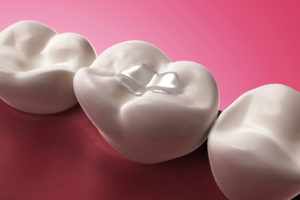Why Do Tooth Fillings Keep Coming Loose?
 You might be surprised to hear that a filling comes out. This can even happen more than once. You will probably be feeling shocked when you realize your filling has gone missing. But please don’t panic! First, dial your dentist’s phone number because they will help put you back in line to smile with a healthy mouth.
You might be surprised to hear that a filling comes out. This can even happen more than once. You will probably be feeling shocked when you realize your filling has gone missing. But please don’t panic! First, dial your dentist’s phone number because they will help put you back in line to smile with a healthy mouth.
Suppose the filling falls out; in this case, you may feel some discomfort or pain. You might be much more sensitive to something as simple as hot or cold temperatures and, at worst, your tooth might fall out. This is not the end of the world, but you should see your dentist as soon as possible to avoid letting things get nasty.
Here are a few reasons why fillings can get loose. Knowing these can help you decide whether or not something’s wrong with your filling, whether it really is loose or just needs some extra care. It also lets you know how to approach the situation from home so you can handle it at home.
Natural Wear and Tear
Among the major causes that may make a tooth filling loose is natural wear and tear. Every time we chew, there is tremendous pressure at play on our teeth that might slowly have an impact on the integrity of the fillings. The grinding and clenching over the years can indeed lead to small cracks or even fractures in the filling material, thus weakening its bond to the tooth. Added to this is the deterioration of the materials used for fillings with time, thus making them less effective. That is why frequent check-ups with the dentist are needed to check on the condition of these fillings and address signs of wear at an early stage.
Poor Bonding
Poor adhesion may result during the filling of a tooth, leading to severe consequences, including the filling eventually loosening. The surface of the involved tooth should be properly cleaned and dried before the filling material is placed to ensure the integrity of the bond between the filling and the tooth structure. Vapors or improper preparation might compromise the bond of filling, making it loosen more easily in the pressures exerted by mastication. Second, the bonding agent must be of good quality; low-grade bonding agents will not give sufficient bonds to ensure lasting adhesions. Routine dental checkups will point out bonding issues before they become major problems.
Improper Placement
The improper placement of the fillings can significantly contribute to their loosening and in the final instance, failure. Gaps between the filling and the structure that bacteria may penetrate through are likely to appear if the filling does not adhere well to the surrounding structure. In addition, an over- or under-contoured filling may affect the natural bite, which, to some extent, may cause pain or discomfort together with excessive pressure on certain areas. This would lead to much pressure during mastication and hence its displacement with time. Fillings, therefore, require careful placement and shaping to demonstrate durability and functionality functions; thus, dental visits are essential in maintaining oral cavity health.
Use of Low-Quality Materials
The use of low-quality materials for the filling may also lead to serious problems, which include looseness of the fillings. Cheaper materials would not bond appropriately with the structure of the tooth due to a weak bond and thus gradually deteriorate through time. Low-quality fillings also tend to wear out faster under pressure from chewing, leading to faster degradation. They can also lack the needed strength to withstand thermal shocks that are brought about by hot or cold drinks and foods, expansion, and contraction that further threaten their integrity. For such results to be long-lasting, it is important to choose a dentist who uses quality filling materials.



 |
|